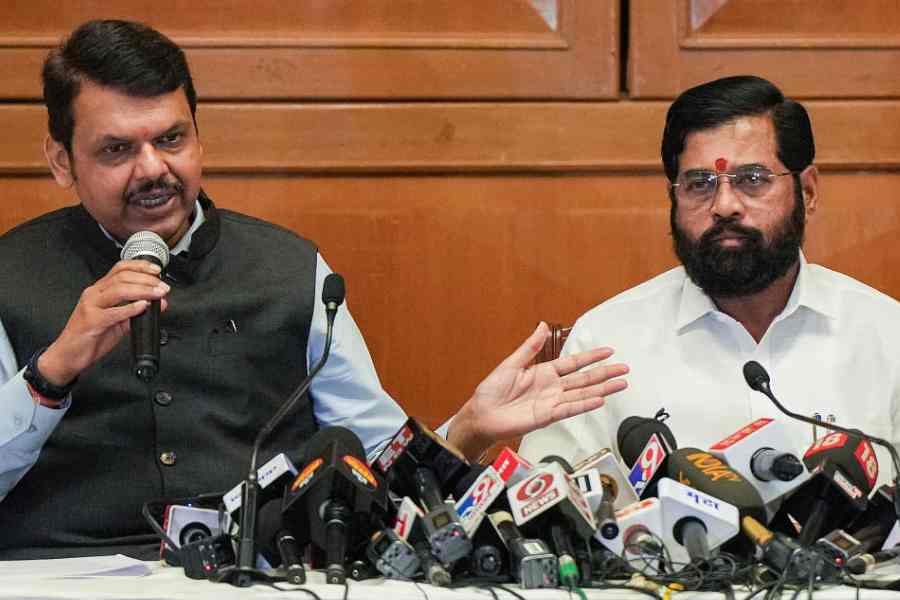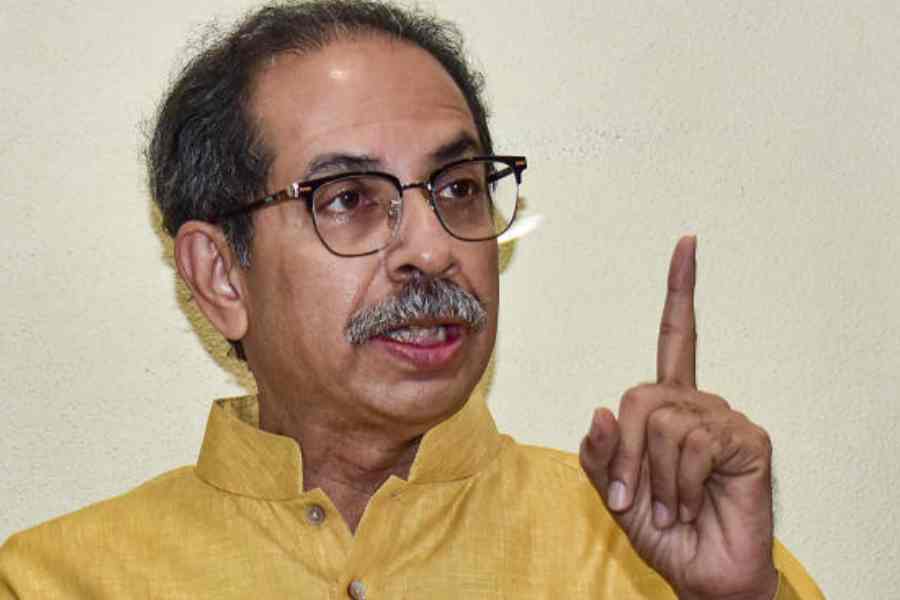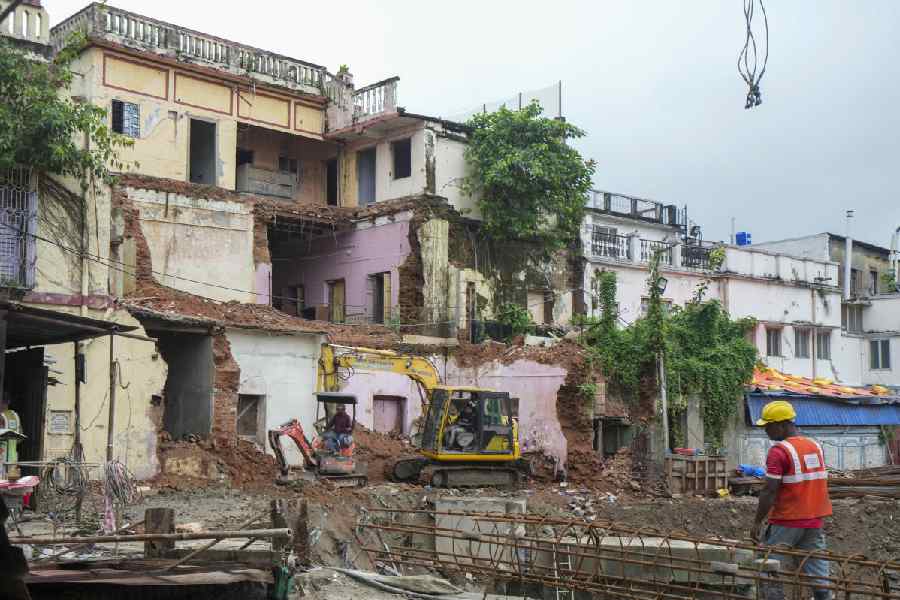A five-judge constitution bench of the Supreme Court on Thursday questioned then Maharashtra governor Bhagat Singh Koshyari’s decision to ask then Shiv Sena chief minister Uddhav Thackeray to prove his majority in the House after Eknath Shinde’s rebellion last year, saying he had no “objective material” to do so.
However, the bench headed by Chief Justice D.Y. Chandrachud said it could not now reinstate Uddhav as chief minister since he had resigned “voluntarily” instead of facing the June 30, 2022, floor test.
The bench further ruled that following Uddhav’s resignation, the governor was justified in asking Sena rebel Shinde, who was supported by the single largest party, the BJP, to form the government.
The court also said the July 3, 2022, decision by Speaker Rahul Narwekar to recognise Bharat Gogawale (of the Shinde group) as Sena chief whip without examining the claims of the rival (Uddhav) faction’s Sunil Prabhu was “illegal”.
It, however, refused to interfere with the Election Commission’s October 17, 2022, decision to allot the Sena’s original bow-and-arrow symbol to Shinde’s group.
The bench, which included Justices M.R. Shah, Krishna Murari, Hima Kohli and P.S. Narasimha, was dealing with a batch of petitions moved by the Uddhav and Shinde factions.
It noted that the governor had while directing a floor test said that (i) the majority of Sena MLAs wanted an end to the Sena-NCP-Congress alliance; (ii) Uddhav was trying to win the MLAs over using undemocratic methods; and (iii) Uddhav had lost the trust of the House and his government was in a minority.

Maharashtra Chief Minister Eknath Shinde with Maharashtra Dy CM Devendra Fadnavis interacts with the media after the Supreme Court verdict on the state's political crisis, in Mumbai, Thursday, May 11, 2023. PTI
However, the bench said, while a resolution by the rebels asserted that some Sena MLAs were dissatisfied with the functioning of the Maha Vikas Aghadi government, it did not record their intention to withdraw support to the government.
It said that a letter sent by some Sena MLAs to the governor requesting him to issue directions to the appropriate authorities for restoration of their security detail mentioned that those MLAs “no longer wanted to be a part of the corrupt MVA government”.
However, this cannot be taken to mean that they had withdrawn their support on the floor of the House, the bench said. It added that nothing in any of the communications relied upon by the governor indicated that the dissatisfied Sena MLAs intended to withdraw support to the chief minister and the council of ministers.
“The course of action they wished to adopt in order to air their grievances and redress them was, at the time the floor test was directed to be conducted, uncertain,” the 141-page judgment said.
“Whether they would choose to enter deliberations with their colleagues in the House or in the political party, or mobilise the cadres, or resign from the Assembly in protest, or opt to merge with another party, was uncertain.
“Therefore, the governor erred in relying upon the resolution signed by a faction of the SSLP (Shiv Sena Legislature Party) MLAs to conclude that Thackeray had lost the support of the majority of the House.”
The court said the governor had also relied on letters written by BJP leader Devendra Fadnavis and seven Independent MLAs urging him to direct Uddhav to prove his majority in the House.
“First, both Fadnavis as well as the seven MLAs could have well moved a motion of no-confidence. Nothing prevented them from doing so. Second, a request by some MLAs for a direction to the chief minister to prove his majority does not, taken alone, amount to a relevant and germane reason to call for a floor test,” the bench said.
“The governor was not justified in calling upon Thackeray to prove his majority on the floor of the House because he did not have reasons based on objective material before him to reach the conclusion that Thackeray had lost the confidence of the House.”
The bench elaborated: “The governor ought to apply his mind to the communication (or any other material) before him to assess whether the government seemed to have lost the confidence of the House.
“We use the term ‘opinion’ to mean satisfaction based on objective criteria as to whether he possessed relevant material, and not to mean the subjective satisfaction of the governor.”
It added: “Once a government is democratically elected in accordance with law, there is a presumption that it enjoys the confidence of the House. There must exist some objective material to dislodge this presumption.”
The bench noted: “The political imbroglio in Maharashtra arose as a result of party differences within the Shiv Sena. However, the floor test cannot be used as a medium to resolve internal party disputes or intra-party disputes.”
It added that “dissent and disagreement” within a political party must be resolved in accordance with the remedies prescribed under the party constitution or through any other method that the party chooses.
Status quo ante
As for the Uddhav group’s plea for restoration of “status quo ante” with Uddhav as chief minister, it fails to “account for the fact that Mr Thackeray did not face the floor test on 30 June 2022 and instead submitted his resignation”.
“This court cannot quash a resignation that has been submitted voluntarily. Had Mr Thackeray refrained from resigning from the post of the chief minister, this court could have considered the grant of the remedy of reinstating the government headed by him,” the court said.
It said that after the Uddhav faction legally challenged the governor’s direction for a floor test, the apex court had on June 29 last year held that the outcome of the June 30 trust vote “shall be subject to the final outcome” of the batch of petitions before it.
“Since the trust vote was not held, the question of it being subject to the final outcome of these petitions does not arise,” the judgment said.
Speaker’s role
The bench said Speaker Rahul Narwekar was aware that the Sena legislature party had split into two factions when, on July 3, 2022, he appointed a new Sena whip and a new leader of the legislature party.
It underscored that the earlier resolution by the Shinde faction had specifically mentioned the “split”. Besides, the resolutions moved by the two factions appointing two different whips and two different leaders of the legislature party were a clear indication about there being two camps in the Sena, it said.
Yet, “the Speaker on taking cognisance of the resolution passed by the faction of SSLP led by Shinde, did not attempt to identify which of the two persons who were nominated (Prabhu or Gogawale) were authorised by the political party”.
“The political party and not the legislature party appoints the whip and the leader of the party in the House,” the court said.
“In a contentious situation such as this, the Speaker should have conducted an independent inquiry based on the rules and regulations of the political party to identify the whip authorised by the Shiv Sena political party.
“...The Speaker must only recognise the whip appointed by the political party. The decision of the Speaker recognising Mr Gogawale as the chief whip of the Shiv Sena is illegal because the recognition was based on the resolution of a faction of the SSLP without undertaking an exercise to determine if it was the decision of the political party.”
Speaker’s powers
After Shinde’s rebellion, the Uddhav-led Sena had sought disqualification of the dissidents. But as Deputy Speaker Narhari Zirwal (there was no Speaker at the time) sent disqualification notices to 16 rebels, the Shinde group sought Zirwal’s disqualification.
It then moved the apex court arguing Zirwal could not disqualify any MLA since he himself faced a disqualification motion.
On Thursday, the five-judge bench referred to a seven-judge constitution bench the question whether a Speaker can decide on the disqualification of MPs and MLAs when the legislators have moved a disqualification notice against the Speaker.
The reference to a seven-judge bench came because two earlier five-judge benches had delivered conflicting judgments on the matter.
In the 2016 Nabam Rebia case, a five-judge bench had ruled that the Speaker cannot decide on the disqualification of legislators if there is already a motion against the Speaker’s own continuance.
However, in the 1992 Kihoto Hollohan case, a five-judge bench had ruled that the Speaker was empowered to decide on the disqualification of legislators even if a disqualification motion was pending against the Speaker.
Speaker’s election
After Shinde became chief minister, BJP member Rahul Narwekar was elected Speaker on July 3, with the Sena rebels — some of them facing disqualification notices from Zirwal — too voting.
On Thursday, the apex court said an MLA has the right to participate in House proceedings regardless of the pendency of any petitions for their disqualification. The validity of the House proceedings in the interregnum would not be “subject to” the outcome of the disqualification petitions.
Therefore, the House’s election of Narwekar as Speaker was not invalid merely because some of the MLAs who participated in the election faced disqualification proceedings.
Symbol allotment
The bench rejected the Uddhav faction’s plea that the Election Commission of India (ECI) was barred from adjudicating petitions for the allotment of party symbols until the “final adjudication” of the disqualification petitions.
“…An order of the Speaker attains finality only after all avenues for appeal have been exhausted or are barred by the passage of time. The time that it would take for an order of the Speaker to attain finality is uncertain,” the court said.
“The ECI is a constitutionally entrenched institution which is entrusted with the function of superintendence of and control over the electoral process. The ECI, which is a constitutional authority, cannot be prevented from performing its constitutional duties for an indefinite period of time. Proceedings before one constitutional authority cannot be halted in anticipation of the decision of another constitutional authority.”












